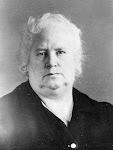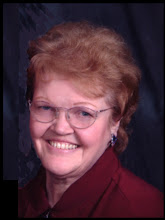Thursday, April 14, 2011
JOHN CROMPTON -PART OF OUR ONLY NAUVOO PIONEER FAMILY
JOHN CROMPTON HISTORY FROM DUP MUSEUM
(Married to Hannah Hardy Eckersley Crompton- see her history on this site.)
Arrived in Utah: 1853
Independent Company
Also:
Hannah H. E. Crompton, his wife
Margaret Emma (Rushton) infant daughter
Four Stepchildren named Eckersley.
Information obtained from Elvira C. Steel, daughter.
Written by Edith Lovell, county historian.
Bonneville County Company Daughters of Utah Pioneers
(All material in ( parenthesis) added by Carolyn J. Christensen from family records.
(Carolyn Johnson Christensen > Doris Kirkham Johnson > Sarah Adelaide Wrigley Kirkham > Sarah Ann Robinson > Sarah Eckersley Robinson > Hannah Hardy Eckersley Crompton, sealed to John Crompton)
JOHN CROMPTON
John Crompton was born in 1829 (6 July) in Bolton England. He was the son of Thomas and Elizabeth or Betty or Betsey {listed as Betsey in Patriarchal Blessing. Though Margaret is listed as John’s mother in one or two sources, she is listed as Betsey in many, and Margaret is listed as her mother.) Greenhalgh Crompton (who were married in about 1828). Thomas’ father, Samuel Crompton, (or possibly a relative since Thomas’ birth entry hasn’t been located) was the inventor of a Spinning Jenny or Spinning Mule. When the baby John was six months old (end of 1829 or beginning of 1830), his parents came to America where his father (Thomas) was engaged to teach the operation of the Spinning Jenny. They lived in the South, traveling from place to place. The American cotton textile industry was being started at this time; heretofore, the raw cotton had been shipped to England and then returned when it had been made into cloth. Thomas Crompton played an important part in establishing the cotton industry in the south. He worked very hard at his job, though for small pay. (As far as can be established, Thomas and Betty had two other children, Robert born on 11 August 1834 in New Jersey, and Margaret born in about 1836.)
The young couple (Thomas and Betty) heard L. D. S. Missionaries and joined the church. Resuming his work in the South, Thomas Crompton found himself an outcast and was driven out by the very ones he had worked so hard to help. (Early Church Membership files indicate they were baptized in Nauvoo in 1842.)**
(In January of 1845, Thomas (age about 41) received a Patriarchal Blessing from John Smith, recorded by Samuel L. Smith, in Nauvoo. At this time, his son John (age 16) also received a blessing. In July of 1845, Thomas again received a Patriarchal Blessing, as did his wife, at the hands of Samuel L. Smith with Arthur Milliken as recorder. On 7 February of 1846, Thomas and Betsey were two of the saints to receive their washing and anointing and endowments in the Nauvoo Temple. By this time, both John and Thomas were in a Quorum of the Seventys in Nauvoo. )
( John was baptized in 1844 and received his Patriarchal Blessing while in Nauvoo by John Smith.)
They were in Pottawattamie Co. Iowa, during the cholera epidemic, and both Thomas and his wife died of it. (Early Church membership files list them as being buried in Pottawattamie, Iowa in 1850. They probably died in Council Bluffs or nearby before the census was taken that year.)
John Crompton (age 21) met and married Hannah Hardy Eckersley (age 35) married, on 1 March 1850). She was a young widow ( her husband was murdered in St. Louis) with four daughters. (She had come from St. Louis and was living in Pottowattamie, Iowa at the time the Census was taken in 1850. It can be assumed that Thomas and Betsey were living with them or close by, until their death. John’s younger brother (Robert) and sister (Margaret) were part of his household. Hannah had worked at a prominent hotel in St. Louis to support her four daughters as her husband with whom she had left England and come to America was murdered in St. Louis.)
John and Hannah had one child in St. Louis, which died. (This was Hannah Elizabeth born in 1851. She was probably born in Council Bluffs. She died in 1852.) (It seems as though John lost his parents, got married, gained four step-daughters, lost a baby daughter, left for Salt Lake and gained another baby daughter within 3 ½ years.)
They moved west with the Saints, traveling across the plains in an independent company. A daughter, Margaret (Rushton) was born at Platt River during a storm so severe that the wagon had to be tied down (21 July 1853, Platte River, Saunders, Nebraska). (In 1853, the household of John and Hannah included John’s brother Robert,, Hannah’s four daughters by her first marriage, and John and Hannah’s infant daughter, and John’s sister, Margaret traveled to Salt Lake City in the Henry Ettleman Wagon Train Company. This group was probably a small part of the Edward Pugh Company who arrived in the valley in September. Hannah gave birth to another daughter during the trip, and one later in Salt Lake. John’s sister, Margaret did not travel to Salt Lake with them and it is not known what happened to her.
They arrived in Big Cottonwood in 1853. A daughter, Elvira (Steele) was born in Big Cottonwood November 15, 1856. When she was six months old, they moved to American Fork. A son John was born in 1860, who died at six weeks. (There is a note of another son being born in 1861 who died as a child.)
(John and Hannah were sealed on 3 August 1861 in the Endowment House. John died on 2 March 1913 in American Fork. He lived 12 years past the death of his wife.)
SUPPLEMENTAL MATERIAL SUPPLIED BY CAROLYN J. CHRISTENSEN
After the Saints had been driven from Nauvoo, a brother by the name of Crompton went to St. Louis to secure an outfit to go to the land of Zion to be with the Saints of God. The arduous journey across the plains was at length begun with one yoke of oxen and one of cows hitched to a covered wagon containing their few necessary valuables and provisions for the journey. Their captain was Edward Pugh. When they reached the North Platte River in the state of Nebraska, a baby girl was born. They forded the Platte River the next morning. The new baby was called Margaret Emma*. The mother was too sick to nurse her baby. She was fed on milk from the cows that had to help pull the load. This milk did not agree with the baby and she was not well until their arrival in Utah. They arrived in Utah in September. They picked up potatoes on shares and had enough to do them all winter. (See, In Covered Wagon Days.)(For further details, see the history of Hannah Crompton)
John and Hannah moved to Little Cottonwood, where they resided two years. A baby girl which they named Elvira was born to them in 1855 (Hannah age 40). This family then moved to Camp Floyd (Cedar Valley) where the resided until after the arrival of Johnston’s Army. On account of the Indians being on the war path, they moved to American Fork that same year.
They went through all the hardships of pioneer life. Many times they were without bread and gathered weeds, berries, and thistle roots, until they could raise something.
Their first crop was barley, which matured a little earlier than the wheat. This barley was ground in a coffee mill to make bread. Their only sweets were beet and carrot molasses, which they made themselves.
Hannah (age 65) and her husband John, (age 51) left American Fork in 1890 and went to Sanpete County to live with her eldest daughter in part of her home; she (Annetta Eckersley Draper) being left a widow, and they were getting too old to care for themselves. However, John returned to American Fork sometime later and died there.
** Other research indicates in 1842, they joined the Church of Jesus Christ of Latter-Day Saints, and in March of 1844, they moved from Shrewsville, Pennsylvania to Nauvoo.
* John’s daughter Margaret and a younger sister Elvira eventually married and moved to the Idaho Falls area where Margaret was a “regional” stake RS President and Elvira was a counselor.
Subscribe to:
Post Comments (Atom)
.jpg)
.jpg)


No comments:
Post a Comment
Please comment or add information to be published on this site.